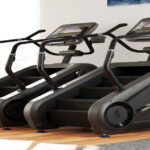Orthotics are more than medical devices tucked into shoes; they are personalized solutions designed to align, support, and protect the feet while improving mobility and overall body posture. For millions who rely on them daily, knowing how to properly care for orthotics is as important as the devices themselves. Within the first weeks of wearing orthotics, users often wonder how long they last, how to clean them, and what habits extend their lifespan. This guide answers those concerns clearly: effective care of orthotics involves consistent cleaning, correct usage, mindful storage, and periodic adjustments under professional guidance. Ignoring these practices can lead to discomfort, reduced effectiveness, or even injury.
In practical terms, the care of orthotics begins with understanding their material and design, since different types—from rigid plastic to soft foam—require different upkeep. Users must learn how to prevent odor, maintain cushioning, and avoid common mistakes such as exposure to high heat or prolonged moisture. Equally critical is knowing when orthotics have reached the end of their life cycle and need professional reassessment. Orthotics can be a significant investment, and ensuring they remain functional for as long as possible saves cost and enhances daily comfort. As one podiatrist aptly notes, “Orthotics work silently every step of the way, but they demand conscious care to perform at their best.”
This article explores in depth how to clean, protect, and maintain orthotics, while also highlighting signs of wear, adjustment needs, and lifestyle habits that keep them effective. By the end, readers will gain a clear, step-by-step understanding of how to ensure their orthotics deliver maximum comfort and durability over the years.
Understanding Orthotics and Their Role
Orthotics are custom-designed or pre-fabricated devices inserted into footwear to improve alignment, relieve pressure, and correct biomechanical issues. They can alleviate pain from plantar fasciitis, flat feet, arthritis, or sports injuries. Because they are tailored to each user’s foot shape and condition, orthotics become deeply personal medical tools. Unlike standard shoe inserts, orthotics must be treated with specific care because even slight damage or wear can compromise their ability to correct posture and distribute weight evenly.
Proper care of orthotics ensures that they continue to support natural movement while preventing secondary problems like knee pain, hip strain, or back discomfort. According to clinical research, orthotics that are poorly maintained lose up to 40 percent of their effectiveness within a year, primarily due to dirt buildup, compressed cushioning, or structural warping. Therefore, understanding both the purpose and limitations of orthotics is the first step toward effective care. Users must remember that orthotics are not indestructible; they are tools that respond to body weight, sweat, and environmental conditions. As one long-time wearer explains, “Treat them like eyeglasses for your feet—without proper cleaning and adjustments, clarity fades.”
Daily Care Habits for Orthotics
The simplest way to extend the life of orthotics is through daily habits. At the end of each day, removing them from shoes allows airflow, reducing moisture buildup and preventing bacterial growth. Cleaning should be gentle, avoiding harsh chemicals that can break down materials. Most orthotics can be wiped with a damp cloth or mild soap solution, followed by air-drying completely before reinsertion.
Users should resist the temptation to place orthotics near heaters or under direct sunlight for faster drying, as high temperatures can cause warping. A useful tip is rotating shoes, giving orthotics adequate time to breathe. Just as athletes rotate equipment, everyday users can maintain better hygiene by having two pairs of orthotics or alternating between different footwear. Daily inspections for cracks, thinning padding, or odor also help detect early signs of wear. The most common mistake among users is neglect, leading to sudden discomfort or unexpected device failure. Taking two minutes each day to clean and inspect orthotics ensures consistency in comfort and performance.
Cleaning Methods and Mistakes to Avoid
Cleaning orthotics seems straightforward, but many users make errors that shorten their lifespan. For example, machine washing or soaking orthotics in water is strongly discouraged, as adhesives and structural materials may weaken. Instead, wiping with a soft damp cloth, using mild detergent when necessary, and avoiding excess water are key practices. To control odor, sprinkling baking soda lightly on orthotics overnight helps absorb moisture without harming materials.
One mistake is using alcohol-based cleaners or bleach, which can degrade the surface and cause skin irritation when orthotics are worn again. Another common oversight is neglecting the fabric covers of orthotics, which often trap sweat. Brushing gently with a soft toothbrush can remove debris from fabric layers. For users with leather-based orthotics, specialized leather cleaners should be applied sparingly, with conditioning treatments to prevent cracking. The guiding principle in cleaning is gentle consistency—never aggressive scrubbing or extreme methods. As one specialist explains, “The goal is not to sterilize orthotics but to preserve their supportive design.”
Common Materials and Their Care Requirements
Different orthotics are made from materials such as rigid plastic, carbon fiber, cork, gel, or memory foam. Each requires specific handling. Plastic and carbon fiber orthotics are highly durable but prone to cracking if exposed to extreme heat. Foam-based orthotics provide superior cushioning but degrade faster with moisture, requiring careful drying. Cork-based models need extra attention to prevent chipping or crumbling under pressure.
The material composition influences cleaning methods and longevity expectations. For instance, gel orthotics should never be punctured, while leather-covered orthotics demand conditioning. Understanding material-specific care allows users to avoid mistakes and extend usability. The table below outlines basic care strategies for common orthotic materials.
Orthotic Materials and Care Guidelines
| Material | Characteristics | Care Recommendation | Lifespan Expectancy |
|---|---|---|---|
| Plastic/Carbon | Rigid, durable | Avoid heat; wipe with damp cloth | 2–5 years |
| Foam | Soft, cushioning | Air dry daily; avoid soaking | 1–2 years |
| Cork | Lightweight, firm | Prevent moisture; use gentle brushing | 2–3 years |
| Gel | Flexible, shock-absorbing | Avoid punctures; clean with mild soap solution | 1–2 years |
| Leather | Stylish, breathable | Condition occasionally; avoid harsh detergents | 2–4 years |
Professional Maintenance and Adjustments
Over time, even well-maintained orthotics require professional checkups. Feet change with age, weight fluctuations, or medical conditions, meaning orthotics must be adjusted accordingly. A general rule is to schedule a professional review every 12–18 months. Professionals can modify orthotics by adding padding, reshaping contours, or replacing covers.
Neglecting adjustments often leads to orthotics becoming less effective, causing renewed pain or imbalance. Podiatrists stress that small tweaks can extend the functional life of orthotics significantly, preventing the need for costly replacements. In cases where orthotics develop cracks or lose their shape, professional repairs are usually more effective than home fixes. Many clinics now offer digital scans to assess whether orthotics still match foot structure, ensuring precision in adjustments. “Orthotics evolve with the body; without adjustment, they’re like outdated maps,” says one foot health expert.
Lifestyle Practices That Protect Orthotics
Beyond cleaning and professional checkups, lifestyle choices directly affect orthotic durability. Choosing proper footwear is essential; shoes that are too tight or unsupportive strain orthotics unnecessarily. Sports and outdoor activities may expose orthotics to extreme conditions, so investing in moisture-wicking socks or protective shoe liners is worthwhile. Users should avoid wearing orthotics barefoot or in inappropriate footwear such as sandals, which fail to provide adequate housing.
Maintaining a healthy body weight also reduces stress on orthotics, prolonging their function. Another overlooked factor is storage: orthotics should be kept in a cool, dry place when not in use. Carrying a small protective case when traveling prevents bending or crushing. These small lifestyle adjustments combine to safeguard orthotics from preventable damage. The principle is simple: treat orthotics as valuable medical tools, not disposable accessories.
Recognizing Signs of Wear and Replacement Needs
Despite proper care, orthotics eventually reach the end of their service life. Common signs of wear include visible cracks, compressed padding, loss of shape, or persistent odor that cleaning cannot remove. If pain in the feet, knees, or back returns after long-term comfort, it may indicate orthotics are no longer effective.
A rule of thumb is replacing orthotics every 2–5 years depending on material and usage, though high-impact activities may shorten this cycle. Users should trust their comfort as a guide; if orthotics feel different or less supportive, professional reassessment is necessary. The table below summarizes key indicators of when orthotics should be replaced.
Signs of Orthotic Wear and Replacement Indicators
| Indicator | What It Means | Recommended Action |
|---|---|---|
| Visible cracks or breaks | Structural failure | Replace immediately |
| Flattened or compressed areas | Lost cushioning and support | Seek professional review |
| Persistent odor | Bacterial buildup or material decay | Consider replacement |
| Pain recurrence | Reduced biomechanical effectiveness | Professional adjustment |
| Loose fit in shoes | Material shrinkage or wear | Replace or modify fit |
Conclusion: Sustaining Comfort Through Proper Care
Caring for orthotics is not a complicated science, but it requires commitment and awareness. Cleaning gently, storing properly, monitoring for wear, and seeking professional adjustments form the foundation of effective care. These practices transform orthotics from short-term solutions into long-term partners in foot health. As one experienced patient reflects, “Orthotics gave me freedom from pain, but caring for them gave me freedom for years.”
Orthotics represent an investment in mobility, posture, and quality of life. By adopting consistent care practices, users not only extend the lifespan of their devices but also safeguard their own health. Foot pain, joint issues, and posture misalignments can resurface if orthotics fail, underscoring the importance of vigilance. Ultimately, the care of orthotics is a balance between daily habits and professional oversight, ensuring that each step remains steady, supported, and pain-free.
FAQs
1. How often should I clean my orthotics?
Orthotics should be cleaned at least once a week using a damp cloth or mild soap solution. If you sweat heavily or use them for sports, more frequent cleaning may be necessary to prevent odor and bacterial buildup. Always ensure they are completely dry before reinserting into shoes.
2. Can I wash my orthotics in a washing machine?
No, orthotics should never be placed in a washing machine or dryer. The agitation and heat can warp their structure, weaken adhesives, and damage padding. Gentle hand-cleaning is the safest method.
3. How long do orthotics typically last?
Most orthotics last between 2 and 5 years, depending on materials, usage, and maintenance. Foam and gel orthotics wear out faster, while rigid plastic or carbon fiber models often last longer. Regular professional checkups help determine when replacements are needed.
4. What are the signs that my orthotics need replacing?
Key signs include visible cracks, thinning or flattened cushioning, persistent odor, or a return of foot and joint pain. If orthotics feel loose in shoes or stop providing noticeable support, it’s time for professional evaluation.
5. Should I wear orthotics all the time?
It depends on your condition and your doctor’s advice. Many users benefit from wearing orthotics daily, especially during walking or standing activities. However, it is advisable to give them rest at night and allow them to air out to maintain freshness.











